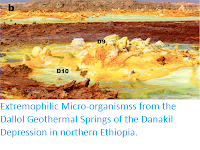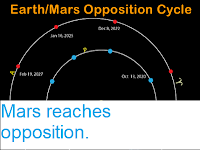The planet Mars will reach its perihelion (the closest point on its
orbit to the Sun) at 8.27 am GMT on Monday 3 August 2020, when it
will be 1.38 AU from the Sun (i.e. 1.38 times the average distance
between the Earth and the Sun, about 206 445 000 km). Mars has a
significantly eccentric orbit, varying in distance from the Sun from
1.38 AU at perihelion to 1.67 AU (1.67 times the average distance
between the Earth and the Sun, about 249 848 000 km) over the course of a
687 day Martian year.
The orbit and current position of the planet Mars, and the other planets of the Inner Solar System. JPL Small Body Database.
The orbit of Mars makes relatively little difference to the appearance
of the planet from Earth; this does vary considerably over the course of
a year, but is affected far more by the relative positions of the
planets on their orbits (they are currently separated by about 60
degrees) than by the distance of either planet to the Sun. Nor does this
variability have any notable affect on the planet's climate, which, as
with Earth, is influences far more by the tilt of the planet.
See also...
Follow Sciency Thoughts on Facebook.







